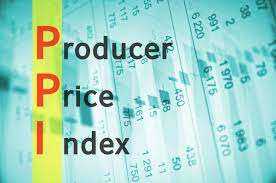In April 2024, Ghana’s Statistical Service reported that prices for goods and services at the point of production (ex-factory prices) saw a year-on-year inflation rate of 16.8%. This is higher than the 15.3% rate recorded in March of the same year.
Looking at a month-to-month comparison, the Producer Price Inflation (PPI) for April 2024 rose by 4.1%, which is higher than the 3.2% increase seen in March 2024.
Furthermore, producer price inflation excluding the construction sector climbed to 20.2% in April 2024, up from 18.8% in March 2024. However, the inflation rate in the construction sector dropped to 50.0% in April 2024.
In the Services sector, the inflation rate went up from 7.6% in March 2024 to 9.4% in April 2024. These figures reflect changes in the costs that businesses face, which can impact prices for consumers in the future.
Additionally, certain sectors experienced inflation rates higher than the national average of 16.8%. Construction led with the highest rate at 50.0%, followed by Mining and Quarrying at 26.4%, Electricity and Gas at 23.8%, and Accommodation and Food Services Activities at 23.5%.
On the other hand, Water Supply, Sewerage, and Waste Management activities had the lowest inflation rate at 7.5%.
Within the Manufacturing sub-sector, 10 out of 23 major groups recorded inflation rates above the sector average of 7.6% in April 2024. The Manufacture of Beverages saw the highest inflation rate at 38.2%, followed closely by the Manufacture of wearing apparel at 37.7%.
Also, there were significant changes in service prices across various sectors. The Transport and Storage sub-sector experienced a notable increase of 3.0 percentage points in inflation, rising from 12.1% in March to 15.1% in April.
Similarly, the Accommodation and Food Services sector saw prices rise by 2.6 percentage points, reaching an inflation rate of 23.5% in April. In contrast, the Information and Communication sub-sector maintained a more moderate inflation rate of 7.7% during the same period.
Prices for construction of buildings also saw a slight uptick, increasing by 0.1 percentage points to 9.0% in April. However, the civil engineering sub-sector experienced a substantial decrease in inflation, dropping by 11.9 percentage points to 74.0%.
Meanwhile, specialized construction activities recorded a modest decrease in inflation, falling to 5.5% in April from 5.8% in March 2024.
Implications of Producer Price Surge on Consumers

The recent surge in producer prices reported by Ghana’s Statistical Service carries significant implications for the ordinary Ghanaian consumer.
With producer inflation reaching 16.8% year-on-year and a monthly increase of 4.1%, businesses are likely to face higher costs in producing goods and services. This trend can ultimately translate into increased prices for consumers in the market.
For everyday shoppers, this means potentially higher prices for essential goods and services, particularly in sectors like accommodation, food services, and transportation, which experienced notable inflation spikes.
Moreover, the rise in construction costs, although tempered in some areas, could also influence property prices and rental rates.
As businesses adjust to these elevated production costs, consumers may encounter price hikes across various sectors. To navigate these changes, individuals might need to exercise budgeting strategies and consider alternatives to manage expenses effectively.
Additionally, monitoring market trends and price fluctuations could help consumers make informed purchasing decisions during this period of heightened inflationary pressures.
READ ALSO: Putin Voices Approval Of China’s Peace Plan





















